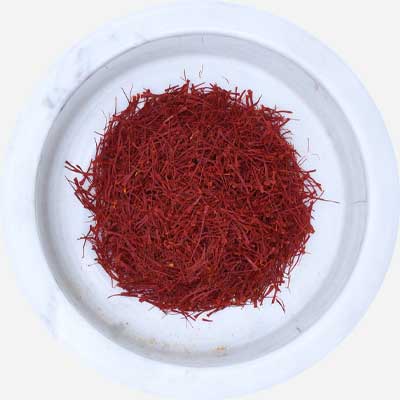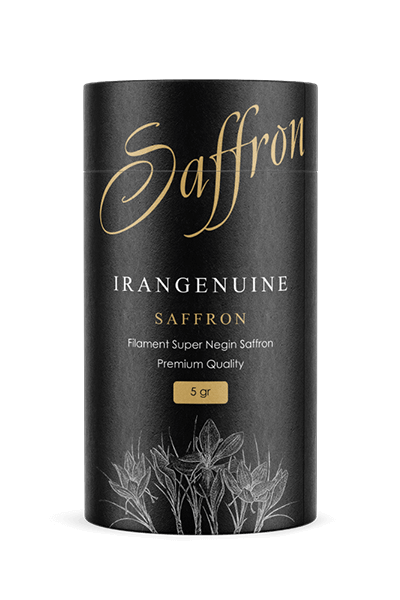
Fat (Per 100 gr)
5.85 g
Calories (Per 100 gr)
310 Kcal
Carbs (Per 100 gr)
65.37 g
Chol (Per 100 gr)
0 mg
Saffron
Saffron has been known for centuries, and it is perhaps the only spice whose value has changed little since the Middle Ages. when a pound of this spice could be exchanged for an Arabian horse. Saffron is obtained from the flowers of a special variety of crocus, which is most often grown in Iran, India, and Greece. It takes three years for flowers to grow. Three or four flowers appear on each plant. On each of them, stigmas are formed, no more than three pieces, which are carefully removed by hand and then dried. That is what it is.
This plant is scientifically known as Crocus Sativus. Due to its magnificent aroma, taste & color, and because of its high financial value, it is also referred to as Red Gold. Today, it is still highly valued as a spice used in cooking, as well as an alternative treatment for various severe diseases. Several studies have proven that saffron is effective for a variety of purposes.
Why saffron
Saffron is a golden spice with a medicinal history of 3 thousand years and many awesome benefits. The benefits of Iran’s saffron are so great for healing and beauty that it has been called red gold, properties that have been mentioned many times in various books of traditional medicine.
Saffron Benefits
Safran has remarkable properties in that it is not only used as a spice but also most people around the whole world use awesome saffron in the preparation of various teas. In the following, we mention some of the most awesome benefits of this wonderful spice.
1. Improving vision
Saffron protects eye cells from damage. Preventing vision loss in old age and improving vision in people with vision disorders are important issues that are discussed in relation to the properties of this spice. AMD or retinal aging is an eye disease that usually occurs after age 50 and reduces a person's central vision. In the dry-type disease "AMD" which includes 90% of the sufferers, yellow deposits are formed in the area of the center of vision. Continuous consumption of it can prevent this disease. A person suffering from this disease can also slow down the growing process of this disease or even recover by consuming saffron. Damaged eye cells can be revived by consuming saffron.
In addition to the mentioned cases, consuming the valuable saffron plant protects the eyes from the harmful effects of sunlight. According to one of the research academic centers, regulating the function of vision cells and protecting them against damage is one of the properties of that. Consumption of saffron also prevents the development of genetic eye diseases. According to the above, the consumption of this wonderful spice is very beneficial, especially for those who have eye disease or the elderly.
2. Preventing cancer
According to the research, saffron has antioxidant properties, is anti-cancer, and can have a significant effect in preventing the occurrence of this disease. Based on this, the use of saffron prevents the occurrence of carcinogenic gene sequences and plays an important role in repairing damaged DNA molecules. By consuming saffron, the parts that are the first signs of cancer are clearly reduced and the progress of the disease is much slower.
3. Making childbirth easier
Consuming saffron in the first trimester of pregnancy, which is known as the critical period of pregnancy, is dangerous and harms the fetus. Consumption of the spice during pregnancy increases the prostaglandin hormone in the uterus and stimulates the smooth muscles of the uterus. This issue can even lead to abortion in the first trimester of pregnancy, which is the period of fetal organ formation so the consumption of a certain amount of saffron is suggested as an abortion drug.
In the following months of pregnancy, the use of saffron is not recommended due to its possible risks. However, it is said that its balanced consumption, especially in the last months of pregnancy, can help in easy delivery. According to this theory, it creates elasticity in the uterine tissue and makes childbirth easier.
4. Reducing depression
One of the most wonderful properties of saffron is reducing depression and treating nervous diseases. It helps to treat depression by releasing serotonin in the body. Also, this wonderful plant is very effective in controlling stress due to its high amount of antioxidants and warm nature.
5. Strengthening the immune system
Saffron is a rich source of vitamin C with high absorption power and strengthens the body's immune system and prevents infectious diseases, colds, and flu. Another benefit and property of those are strengthening the heart and circulatory system. Due to its antioxidant properties, this unique plant neutralizes free radicals in the body and promotes cardiovascular and circulatory system health.
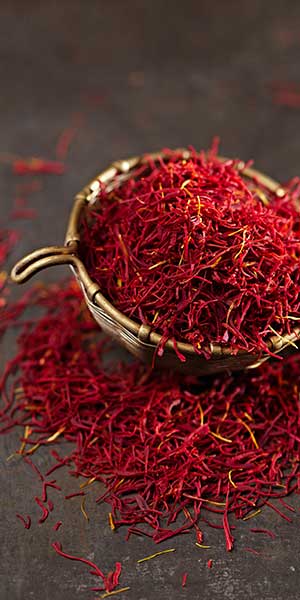
Uses
-
Uses of saffron in food:
The nutritional uses of saffron are probably the same application that we all thought of at first moment. It is one of the best spices in the world and it is used to flavor food, make all kinds of drinks and teas, and its oil is also used in many foods and has many properties. Basically, there is no limit to the use of safran in the foods we eat and we use it and its products for all kinds of foods. Some of the main uses for foods are:
- Coloring and flavoring for boiled rice, various syrups, and soft drinks
- Coloring in meat stews
- Using petals to prepare saffron jam and natural color to food
- A useful seasoning for all kinds of jams
- Making saffron tea
-
Uses of saffron in the industry:
It is also used in various industries such as:
- Dyeing
- Perfumery
- Candle making industry
This plant is used for dyeing many materials such as silk and thread. In the perfumery industry, the very good and lovely smell of it is used to produce different kinds of perfumes, and very fragrant and expensive perfumes are produced from it.
Saffron is also used in the candle-making industry and with its help, fragrant candles with orange and red colors are produced and it is one of the foods used in this industry. Another strange and incredible industrial use of that in the industry is that it is also used in the restoration and maintenance of sensitive works of art.
Among the most important artistic achievements of the Eastern and Middle Eastern culture are the works written on deer skin, and Iran also has a large number of such works of art. One of the interesting uses of saffron is that it can be used in the restoration and maintenance of these works of art and by means of this, these works of art can be kept healthy.
How to use Saffron
5 to 8 threads of that would be enough for 6 people in a meal, in Persian cuisine, there are three different methods to use it.
1. Crushed Saffron with boiled water
Put the stigmas in the pounder.
Rub and powder the stigmas until it is completely crushed.
Pour boiling water on powdered zaferan into a cup.
Mix it and then cover it with the lid for about 30 minutes.
Now you can consume it in your food or mix it with rice.
2. Crushed Saffron with crushed ice
This method is suitable for those who want to feel more of the scent, and take advantage of its aromatic properties.
Put the stigmas in the pounder.
Rub and powder the stigmas until it is completely crushed.
Throw a few pieces of ice into the cup.
Mix it and let it stands for about 30 minutes.
Now you can consume it in your food or mix it with rice.
3. The whole thread with boiled water (for a saffron drink)
Put the stigmas in the pounder.
Pour boiling water on powdered Safran into a cup.
Mix it and let it stands for 10 minutes then it's ready to drink.
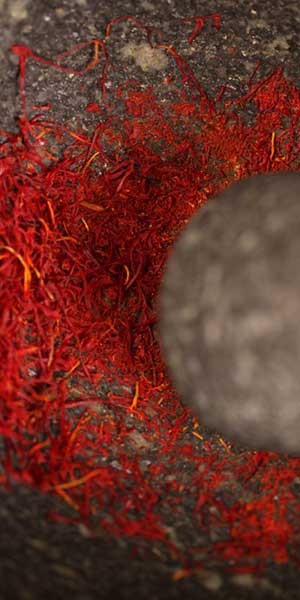
Saffron and diabetes
One of the problems of diabetics is stress and anxiety. During an experiment, scientists came to the conclusion that diabetics have a lower performance during stress and anxiety, these people performed better when using saffron because it acts as a pain reliever and reduces the anxiety of diabetics.
Nutritional value
This plant is an awesome source of vitamins such as A, E, C, and B vitamins, sodium, carbohydrates, fiber, protein, calcium, iron, magnesium, folic acid, manganese, selenium, and zinc. It has many benefits for people who usually have stress and anxiety and feel depressed and tired.
The Various Components Found in Saffron
This product includes more than 150 different compounds & components which include: water, various metals, carotenoids, Safranal, Crocin, anti-oxidants, and other biochemical materials & elements. However, the most important elements that are found in Saffron that greatly affect the overall quality & price of the product are as follows:
1. COLOR
Crocin (C44H64O24)
This is mainly responsible for the astonishingly unique & strong color of this substance, which is highly soluble in water. This is precisely why it is widely used as a food colorant.
2. ODOR
Safranal (C10H14O)
The rather strong, yet highly pleasant aroma of this spice is because of the volatile oils that are found in it. These essential oils absorb the oxygen in the air and create a thick brownish fluid which is called Safranal. This compound emits a fabulous fragrance that is so well-known to its lovers.
3. Flavor
Picrocrocin (C16H26O7)
Picrocrocin is quite a bitter-tasting colorless glycoside substance that gives its truly unique taste.
Maintenance of Saffron
In general, the most important principle in keeping saffron at home is not to place the container containing safran directly in front of light, humidity, and heat. Therefore, if you live in dry and desert areas, it is necessary to use opaque containers to store them. Because direct sunlight damages the quality of this valuable plant.
-
Keep the product in a glass or metal container
If you want to put them in a glass container, make sure to wrap the container in a cotton cloth and then put it in a cool cabinet. In this way, you prevent the penetration of moisture and heat into the container, and at the same time, you preserve its quality.
On the other hand, it is better to use small containers that collect less air inside to store them, so that it has the least contact with air.
-
Saffron's extreme sensitivity to light
Since the plant is very sensitive to light, do not expose it to direct light. Even this sensitivity is enough that farmers pick it during the hours when the light is very low.
-
Preferably, do not grind them until use
It is better not to grind saffron before using it because its aroma will disappear over time. For each use, powder the desired amount of it and then consume it. In this way, you can protect the pleasant aroma of saffron at home.
-
Brewing, a common solution to preserve
One of the common ways to preserve saffron is to brew it. For this purpose, first, grind it and then pour it into a special teapot and put it on the heat. When the spice is infused, you can store it in the refrigerator for two weeks.
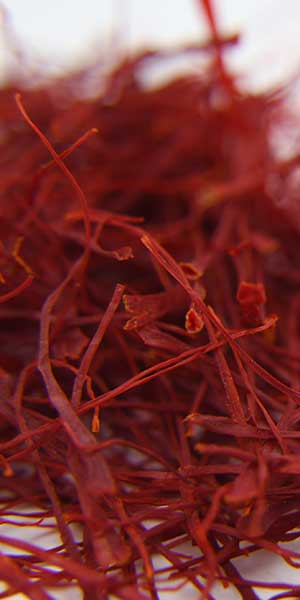

Precaution
It should be noted that despite the many properties mentioned for saffron, its excessive consumption can also cause harm. Among these cases is the excessive dilution of blood and the occurrence of some bleeding. High consumption of spice changes skin color. During menstruation, its high consumption also increases anxiety.
Also, due to its hot temperament, it can cause dehydration and diarrhea. The negative effects of that during pregnancy have also been explained above. It is worth noting that the proper use of saffron properties depends on the balanced and appropriate use of this plant and its non-falsification.
Top Saffron Exporters in the World
Global Consumption & Production
Iran and Spain are countries that have a culture of safran production and consumption in their history, and they are among the first and oldest saffron-exporting countries in the world.
Top 10 Exporter of Saffron in the World
HS code 091020 (Spices; saffron)
Top 10 Importer of Saffron in the World
HS code 091020 (Spices; saffron)
IRAN SAFFRON
Why Iran Saffon?
Iranian Safran, which is known as red gold, is one of the most high-quality and magical spices. It has been very popular since ancient times because Iran is the first and largest producer of this amazing spice, which is exported to Arab countries. and Europe exports.
Countries like Spain buy Iranian Safran and sell it under their own name in the world markets. India has also become a producer of saffron, but it has the lowest quality and cheapest type. Iranian zaferan is bought and sold at a high price because the one exported from Iran is tested and there is no adulteration in it.
Types of Saffron
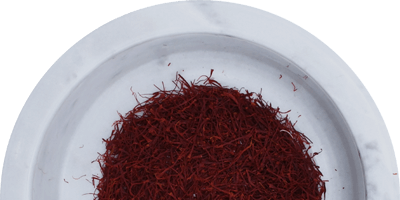
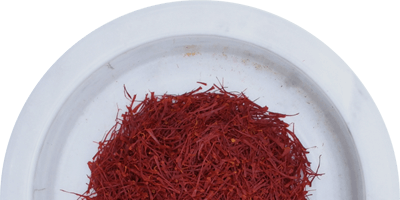
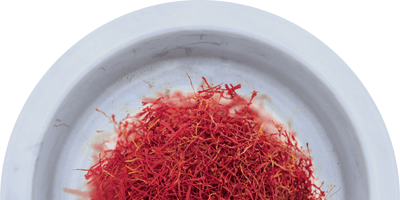
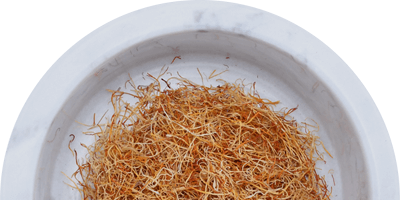
Sargol Saffron
Another type of saffron that is considered one of its best-selling types is Sargol. In this type, the white part of the plant, which is called style, is completely removed and only the red part is used. For this reason, this type is also called full red and premium in some stores abroad.
Among the obvious signs to recognize this type is having a three-branched stigma, which makes it a lot of color and taste. The strands of this type should be completely separate from each other and not intertwined. Sargol is mostly used for daily consumption in Iran and in some cases for export.
Negin Saffron
One of the famous types of saffron, which is very high quality, is known as Nagin. This type is very fragrant and has three strings of completely red stigma and no white part can be seen in it. Also, the threads of this saffron are completely healthy and do not have fractures like Sargol and small pieces are not observed in it. For this reason, the Nagin type is used more for export due to its better appearance, and it has a higher price compared to the previous samples.
Of course, it should be said that because of the similarity between Nagin and Sargol, most people prefer to buy Sargol saffron for home consumption instead of buying Nagin type at a higher price.
Pushal Saffron
Other types of saffron include Pushal. In addition to having red stigmas, this type has about 3 to 5 mm of style (that is, the white part of the plant). Pushal is produced at the beginning of the harvest season and has a longer shelf life compared to other types. In terms of appearance, this saffron is intertwined and curled, and its strands are in the form of coils.
Pushal has more colors compared to saffron in terms of coloring power; Because the part of the stigma, which is red, is more in this type. Many customers believe that Pushal is less likely to be faked due to the fact that it has a small part of the style and can be easily recognized as original.
White Saffron
Another type of Safran available is Konj, which some people may think means the root of the plant that exists in the soil, but it must be said that this is a wrong idea and what is meant by that is the white part of the end of saffron. This type has all the properties of the red part and differs from it only in terms of coloring power.
Compared to other samples, this type has a much lower price, but it has the same properties as them. For this reason, it is recommended that if the product is to be used only for its therapeutic aspect, buying Konj is the best option.

Sargol Saffron
Another type of saffron that is considered one of its best-selling types is Sargol. In this type, the white part of the plant, which is called style, is completely removed and only the red part is used. For this reason, this type is also called full red and premium in some stores abroad.
Among the obvious signs to recognize this type is having a three-branched stigma, which makes it a lot of color and taste. The strands of this type should be completely separate from each other and not intertwined. Sargol is mostly used for daily consumption in Iran and in some cases for export.

Negin Saffron
One of the famous types of saffron, which is very high quality, is known as Nagin. This type is very fragrant and has three strings of completely red stigma and no white part can be seen in it. Also, the threads of this saffron are completely healthy and do not have fractures like Sargol and small pieces are not observed in it. For this reason, the Nagin type is used more for export due to its better appearance, and it has a higher price compared to the previous samples.
Of course, it should be said that because of the similarity between Nagin and Sargol, most people prefer to buy Sargol saffron for home consumption instead of buying Nagin type at a higher price.

Pushal Saffron
Other types of saffron include Pushal. In addition to having red stigmas, this type has about 3 to 5 mm of style (that is, the white part of the plant). Pushal is produced at the beginning of the harvest season and has a longer shelf life compared to other types. In terms of appearance, this saffron is intertwined and curled, and its strands are in the form of coils.
Pushal has more colors compared to saffron in terms of coloring power; Because the part of the stigma, which is red, is more in this type. Many customers believe that Pushal is less likely to be faked due to the fact that it has a small part of the style and can be easily recognized as original.

White Saffron
Another type of Safran available is Konj, which some people may think means the root of the plant that exists in the soil, but it must be said that this is a wrong idea and what is meant by that is the white part of the end of saffron. This type has all the properties of the red part and differs from it only in terms of coloring power.
Compared to other samples, this type has a much lower price, but it has the same properties as them. For this reason, it is recommended that if the product is to be used only for its therapeutic aspect, buying Konj is the best option.
Cultivation sites
Among all the countries in the world in the production and cultivation of saffron, Iran has taken first place. Iran is the largest and best producer of this valuable plant all over the world. In Iran, the city of Qaenat in South Khorasan has made its name as a well-known brand in the world in the field of Safran production and cultivation.
Of course, other cities of South Khorasan and even Razavi Khorasan, such as Gonabad, Torbat Heydarieh, etc., have also reached world fame in the field of production and cultivation of this popular plant. In general, Khorasan province can be considered Iran's first rank in the field of production and cultivation. The aroma and the beautiful appearance of the plant produced in Khorasan are different from other cities.
Planting & Harvesting
-
1
Planting
April, May, June
-
2
Harvesting
October, November
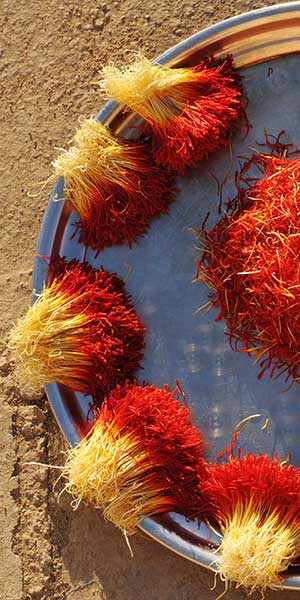
Processing
-
Traditional way:
In this method, the obtained saffron is spread in a dry environment on a cloth for one or two days and it is turned back and forth every other day. In this method, most of the Safran is dried in bunches or girls.
-
Modern or machine method:
An electrical device that has five or ten plates. The plant is placed on these plates and dried at a specific time and temperature with heat inside the device. It is mostly used for super precious ones.
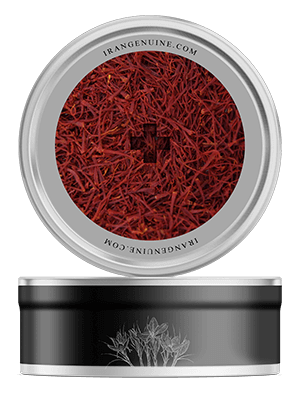
Packaging of saffron
Various forms of packaging:
- Envelope packaging
- Crystal containers
- Glass containers
- Metal containers
Each of these codes has its own characteristics, which are distinguished in terms of price, transparency, and maintaining the quality of the product. It should be noted that the best conditions for storing spices such as saffran are to use containers that are impermeable to air, light, and moisture. In addition, it is better to close the container of spices as soon as you finish your work so that moisture and environmental pollution do not penetrate into it. There are several points that must be taken into account for storing, but it should be noted that plastic containers are not very suitable for storing saffron because the material of these containers causes the product to lose some of its properties. Glass containers can also be a suitable option for storage. Of course, if you use a glass container to store, you should not place this type of container under direct sunlight, because sunlight causes a change in color and a significant decrease in the quality of this fascinating spice over time.
EXPORT
Iranian stunning saffron is exported to 47 countries in the world. Iranian saffron is sent to different countries such as Turkey, Italy, India, and UAE for sale in packages of two-tenths of grams up to a maximum package of one kilo. South Khorasan and Razavi provinces near the Afghanistan border have the highest quality saffron in Iran, but Isfahan, Fars, Kerman, and central provinces are also considered to be the most important areas of saffron cultivation. Unfortunately, these days the global price of saffron has faced stagnation and that is because of the obstacles that have been put in the way of the development of Iran's saffron export.
Shipping
In the Shipping of exported saffron, we must pay attention to the high humidity in the ship in its packaging. Sea transportation may be done in two ways, container or bulk. Sea transportation may be done by cargo ships and barges. In both cases, you should note that the first and most important errors for export saffron shipments are humidity and impact.
How to identify Fresh, Healthy Saffron?
As it was said, saffron is a well-known product all over the world that has many fans. For this reason, there is always this concern among buyers to get the best type of saffron. As a result, global standards are considered to measure the quality of this product, which states that saffron must be completely natural and pure and no additives have been added to it. In general, based on the existing standards, the characteristics of the best type of saffron can be expressed as follows:
- The saffron you buy must have a standard mark; Because otherwise, there is a possibility of saffron being fake and of poor quality;
- Saffron is an expensive spice and low and tempting prices can indicate its fakeness;
- Saffron strands must be completely dry and fragile and be offered to customers without any moisture;
- Original and quality saffron has a pungent and sometimes spicy taste and a sweet and fresh smell;
- Saffron strands must be completely healthy and not broken or crushed. Also, the size of the saffron threads should not be smaller than its normal size; because it shows that other threads except saffron have turned red and fraud has been used;
- The saffron strings should have almost the same dimensions in terms of dimensions and size;
- Saffron strands should not have different colors and should be completely uniform;
- The color of the strands must be completely red and no artificial colors have been used in it;
- The production date of saffron, which is included on its packaging, must be new and up-to-date of because the more recent this date is, the fresher and better quality saffron will be.
7 wonderful products of Saffron
1. Saffron syrup
The syrup is an awesome syrup that can be used as a topping on ice cream or many other pastries.
2. Saffron oil
Safran oil is used for brightening and exfoliating the skin. Also, for people who are looking for a natural remedy for preventing acne, this oil can be the best option.
3. Saffron-infused cheese
Saffron-infused cheese, which is made from sheep’s milk and natural Safran, is an awesome and delicious cheese that can be used in many recipes because of its various health benefits.
4. Crystal sugar
Saffron crystal sugar is a great sweetener for various herbal teas. Iranian people use it for sweetening their teas.
5. Saffron powder
Saffron powder is an awesome product that is mainly used in various foods, desserts, and drinks because of its vibrant color and taste.
6. Saffron tea
Saffron tea, which has a hot temperament, is a well-known herbal tea for healing many diseases in a short period of time.
7. Saffron ice-cream
This kind of ice cream, which is commonly known as Bastani sonnati in Iran, has an awesome taste and everyone should try saffron ice cream in the summertime.
Persian Dishes with saffron
Grilled chicken needs no definition. Grilled chicken adorns all our outings. Almost every Iranian man has expertise in making grilled chicken. But the important thing in cooking a full-fledged grilled chicken is to flavor it, of which Safran is an essential component. The most important step in making a delicious grilled chicken is to season it beforehand. You can do this step the night before. If you have done this, there is nothing special about cooking grilled chicken. Other Persian dishes with this spice are Tahchin and Persian saffron rice pounding which are awesome and you must try.
Persian Pastries with saffron
Saffron pistachio pastry is one of the types of sweets whose stunning yellow color is the result of the involvement of Safran in this Persian pastry. Saffron pistachio pastry is very inexpensive and easy to make, so don’t forget to make it for your family members and relatives.
The other Persian pastry with that is called saffron date Halva. This halva is one of the most delicious Persian Pastries that are very tasty. when it is combined with dates and Iranian Safran, its energy and properties are increased.
Conclusion
Saffron, which is known as the king of spices in the world, is rich in all kinds of minerals, antioxidants, and vitamins that make it have many properties. Due to its many properties, being rare, having a difficult production and processing process, etc., saffron has become the most expensive spice in the world, and each kilo of it is bought and sold for over 10,000 dollars outside of Iran.
The Saffron root, its petals, stigmas, and other implementations of this flower have medicinal and therapeutic properties for the body and are used in various industries. It has been heavily used in the pharmaceutical, cosmetic, health, confectionary, etc. industries due to its numerous properties and diverse uses.
